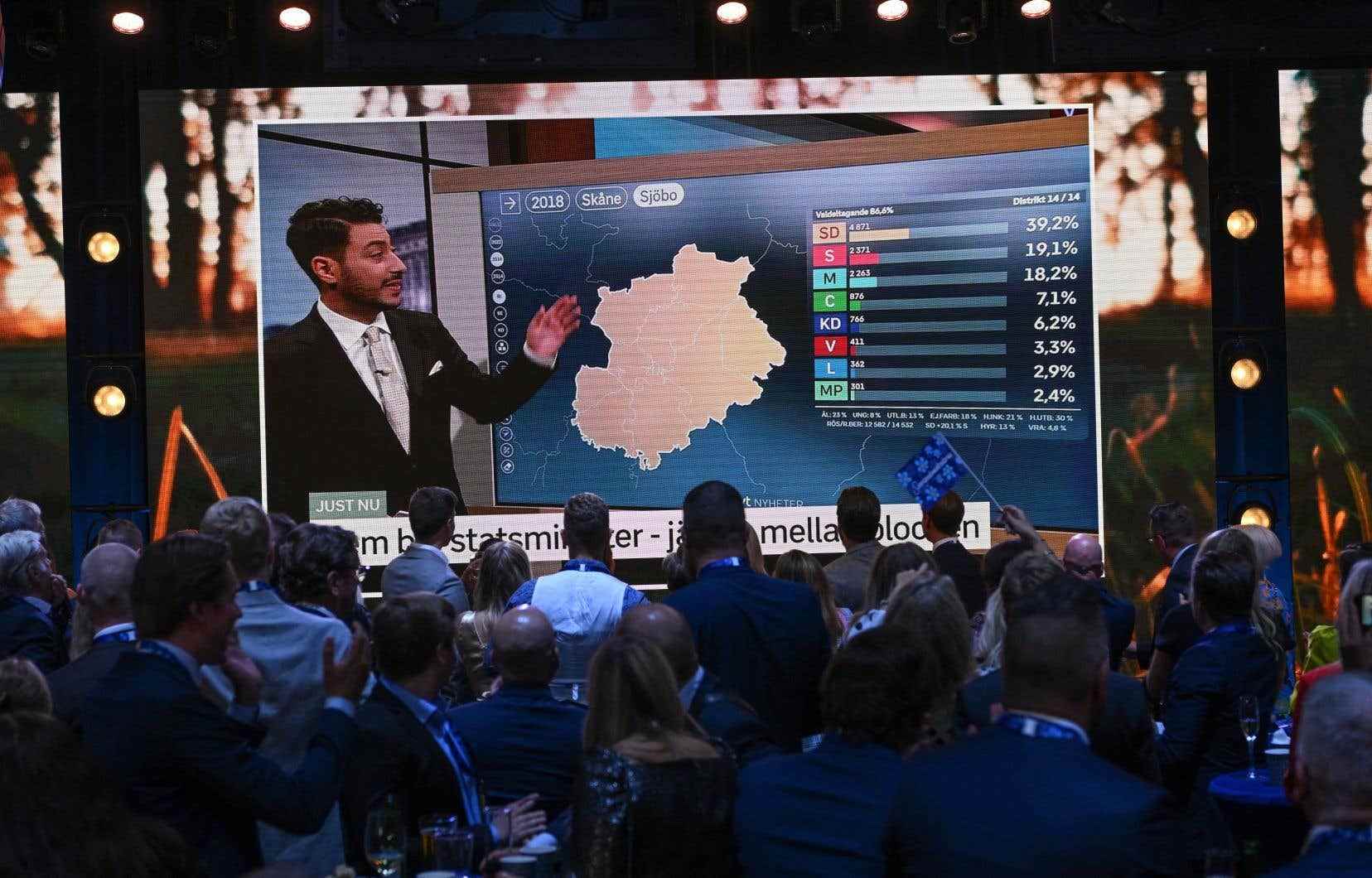The outgoing left is given slightly ahead of the unprecedented bloc between the right and the far right after very tight legislative elections in Sweden on Sunday, marked by a record level of the nationalist party.
According to two exit polls, the left camp led by Social Democratic Prime Minister Magdalena Andersson would obtain a total of between 49.8% and 50.6%, against 48.0% to 49.2% for the total right-wing parties leaning on the nationalist Sweden Democrats (SD).
The latter would reach a new historic high of between 20.5% and 21.3%, becoming for the first time the second largest party in the Nordic country, according to these two polls carried out for Swedish television SVT and TV4.
According to the poll by SVT, the tightest left bloc would clinch a total of 176 seats, just above the absolute majority of 175, compared to 173 for the right/far right bloc.
These highly disputed first estimates promise a long election night to confirm the winners of this election with an unprecedented scenario. Partial results are expected around 10:00 p.m. (4:00 p.m. Montreal time), before near-final results late at night.
Caution is called for because the differences are small, of the order of a few tens of thousands of votes, for an electorate of 7.8 million people.
“It’s a nail-biting scenario,” said Mille Mikael Isberg, a 30-year-old social-democrat activist interviewed by AFP.
Never until these legislative elections, the traditional Swedish right, carried by the conservative candidate for the post of Prime Minister Ulf Kristersson, had considered governing with the direct or indirect support of the SD.
Long pariah, the nationalist and anti-immigration party led by Jimmie Akesson also won first place in the new right-wing bloc.
Sweden’s first female head of government, Magdalena Andersson, led a “red-green” ensemble to win a third four-year term in a row for the left.
According to the two polls by SVT and TV4, the Social Democrats have held on to their first place since the 1930s, as expected, by gaining votes (29.3 to 29.7%). The conservatives of the Moderates would back down and would only be the third party, with 16.0 to 18.8%.
Crime and Energy
A victory for the right supported by the far right would mean a new political era for Sweden, which must take over the rotating presidency of the European Union on January 1 and finalize its historic candidacy for NATO – also supported by the rights.
Conversely, a victory for the left and a defeat for the new nationalistico-conservative bloc would call into question the decision of the right to draw closer to the SD.
Significant immigration and serious nagging criminal gang problems have fueled the party in recent years.
At electoral headquarters in the suburbs of Stockholm, SD activists were jubilant at the announcement of the first estimates, waving their flags in the colors of the party, and the hope remains of seeing the rights take advantage.
“Now we have for the first time a real chance, a real possibility not just to be an opposition party but also to be part of a new government which takes politics in a completely different direction”, reacted the number. 2 of the party, Richard Jomshof, at the microphone of SVT.
A total of 349 seats in the Riksdag, the Swedish parliament, are allocated proportionally to parties achieving at least 4%.
To be invested, a prime minister must not have 175 or more votes against him, but not necessarily an absolute majority in his favour.
The campaign was dominated by themes likely to favor the right-wing opposition: criminality and deadly gang settling, soaring fuel and electricity prices, integration problems…
But the solid popularity of Ms Andersson, whose trust rating exceeds that of her Tory rival Ulf Kristersson, as well as the bogeyman of the far right, argued in favor of the left.
On the eve of the vote, the five polling institutes gave a very slight lead to the red-green camp, but within the margin of error.
